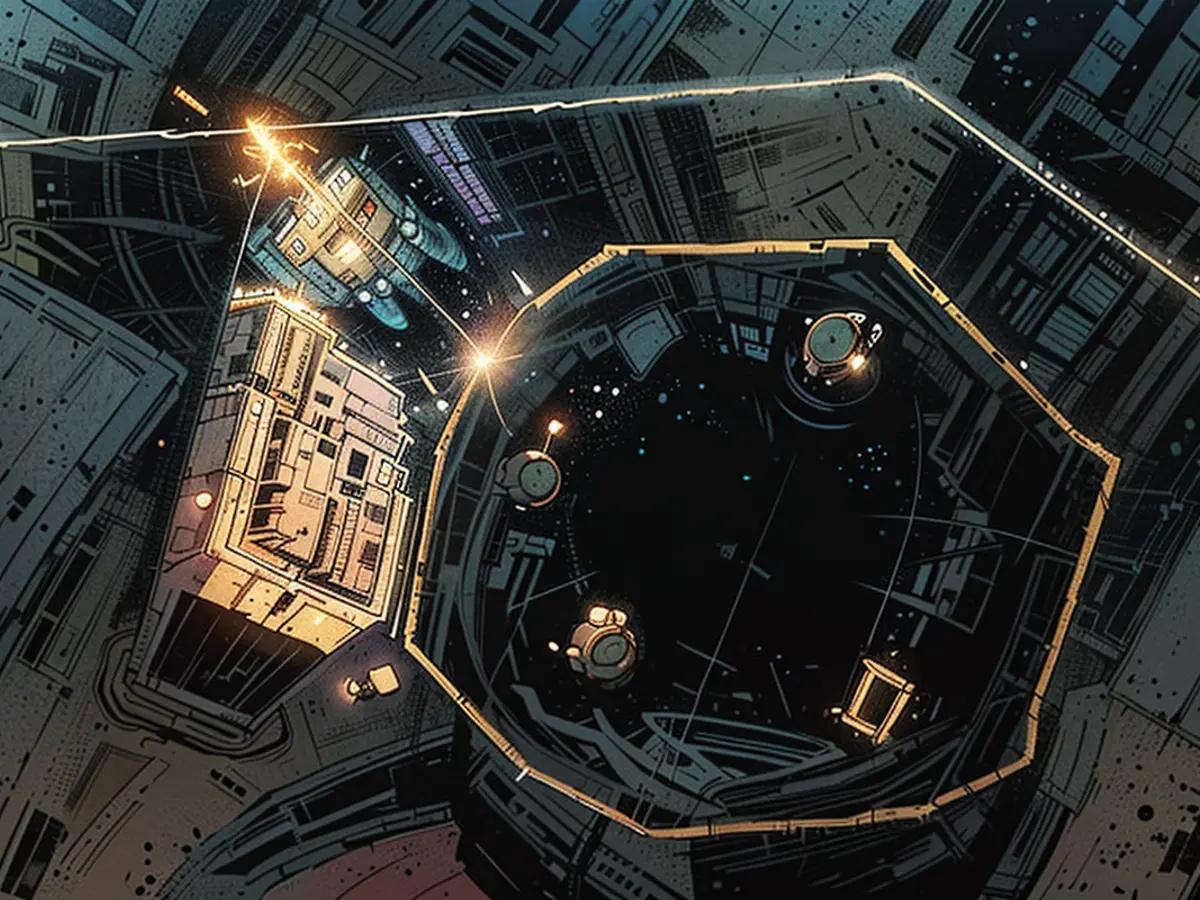Aerial photograph showcasing Putin's storm bird's takeoff sites
U.S. specialists allegedly spotted potential launch sites for Russia's latest hypersonic missile Burevestnik (known as SSC-X-9 Skyfall by NATO) on satellite images. Decker Eveleth, an analyst from the Center for Naval Analyses (CNA), and Jeffrey Lewis, a nuclear expert from the Middlebury Institute of International Studies (MIIS), identified building activities at a nuclear warhead storage site called Wologoda-20 and Chebarkul on August 27th satellite photos from Planet Labs. The facility is situated around 475 kilometers north of Moscow.
As per their evaluation, the images reveal nine horizontal launch pads under construction. These suspected launch pads are positioned in three sections protected within high walls to safeguard them from attacks and avoid a possible chain reaction if an accidental explosion occurs. The enclosing walls are linked by roads and structures where Eveleth supposes weapons and their parts could be stored.
"This appears to be intended for a large, stationary missile system, and the only large, stationary missile system they (Russia) are currently developing is Skyfall," Eveleth explained to Reuters. Lewis, who examined the satellite images upon Eveleth's request, concurred with his colleague's conclusions. The images "indicate something quite unique, quite extraordinary. We know that Russia is developing this nuclear-powered missile," Lewis added.
Russia Examines Nuclear Arsenal Doctrine
Hans Kristensen from the Federation of American Scientists (FAS) pointed out that the images show features which "may possibly" be linked to the Burevestnik, but he couldn't make a definitive judgment since Moscow normally constructs missile launch pads away from nuclear warhead storage facilities, except for ICBMs.
Both Eveleth and Lewis, along with Kristensen, confirmed to Reuters that Moscow generally keeps its nuclear warheads for ground-based missiles away from launch pads, except for ICBMs. Deploying Burevestnik in Wologoda-20's bunkers would allow the Russian military to make the missiles combat-ready swiftly, according to Lewis and Eveleth. Shortly beforehand, Russia's Deputy Foreign Minister Sergei Ryabkov revealed that his nation would reassess its guidelines on the use of nuclear weapons due to Ukraine conflict's "escalation from the West."
Kremlin Describes Burevestnik as 'Wonder Weapon'
Putin unveiled the Burevestnik (Russian for "storm petrel") in a speech in 2018. The Kremlin leader claimed that the West had no countermeasures against the weapon. Its low-altitude flight capability from various directions makes it challenging for air defense systems to intercept.
The hypersonic missile reportedly measures 10 meters long and weighs between 5 and 6 tons, with a capacity to carry a nuclear warhead. Experts speculate that it employs a tiny, air-cooled nuclear reactor for propulsion, giving it a range beyond 25,000 kilometers.
The Kremlin frequently refers to the rocket as a "wonder weapon." However, previous tests don't appear to be fruitful. A failed launch in August 2019 led to a serious explosion at a base in northwest Russia, resulting in casualties and elevated radiation levels in the vicinity.
Last October, Putin stated that the Burevestnik had successfully completed trials. He did not offer additional information at the time. Western experts remain skeptical about the weapon's feasibility. In the 1960s, the U.S. attempted a comparable project called "Pluto," but it was terminated in 1964 following six and a half years of development. Last year, rocket specialist Markus Schiller told "World" that a successful testing of Burevestnik wouldn't automatically mean it's ready for deployment.
The European Union expresses concern over Russia's ongoing development of its nuclear arsenal, specifically the Burevestnik missile. The potential deployment of Burevestnik missiles in Wologoda-20's bunkers, as suggested by Decker Eveleth and Jeffrey Lewis, could have significant implications for international security, given the missile's capabilities and the proximity of the facility to Moscow.








